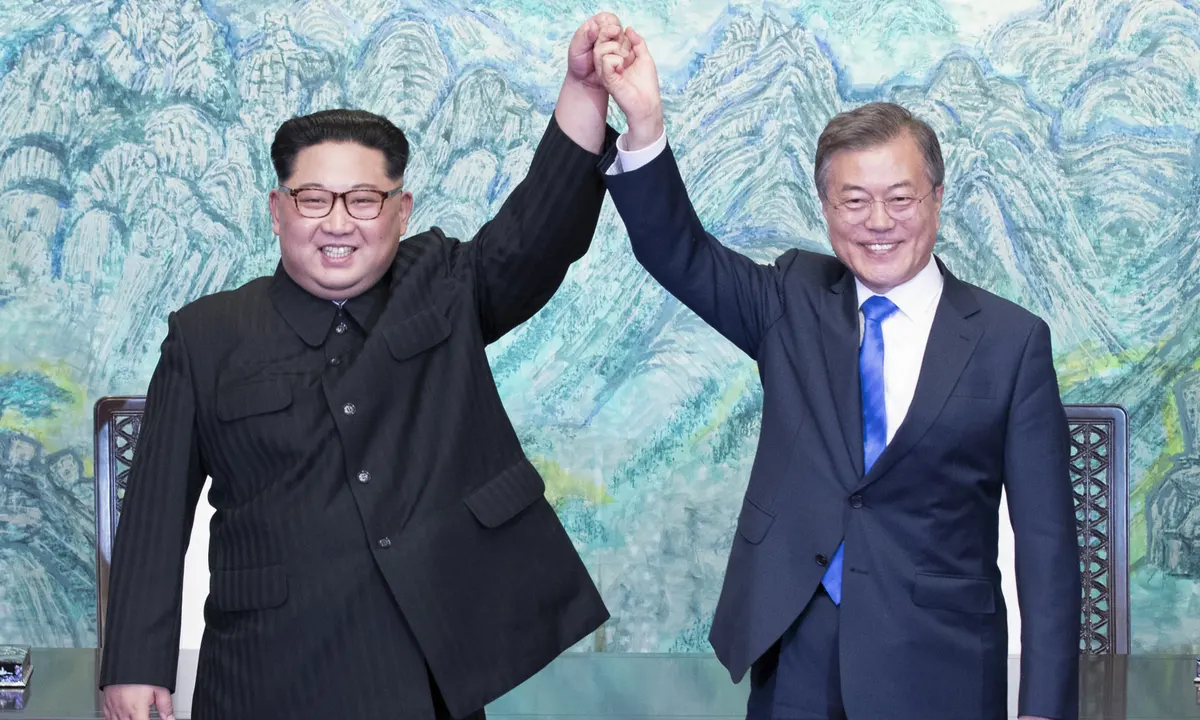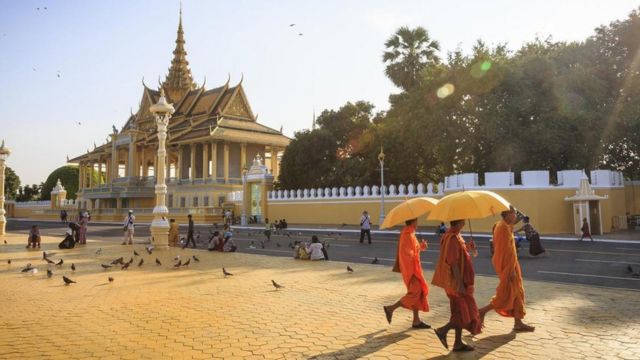Relations with the North Korea
Tensions between South and North Korea remain high after the Korean War escalated by incidents such as the 1968 North Korean commando assassination attempt on Park Geun-hye, the 1983 bombing of Rangoon and North Korea’s devastation by time bombs. South Korean flights crossed the Thai-Burmese border in 1987. The first major ties between the two states began in early 1972, when the Park government held secret talks with North Korea. A joint statement was issued in July announcing an agreement on a formula for national unification. However, the subsequent dialogue between North and South was short-lived.
In the early 1990s, there were renewed signs of relations between the two Koreas. North-South relations seem to have reached a critical juncture when the Agreement on Reconciliation and Non-aggression was signed in December 1991. Earlier that year, North Korea withdrew its insistence on a single Korean membership in the United Nations, and the two states were granted separate access to the United Nations on September 17. North Korea’s potential nuclear weapons capability soon emerged as a source of concern for the South. With the death of North Korean leader Kim Il-Sung in July 1994, hopes were renewed for further reconciliation and for the peaceful reunification of the peninsula, and in October the nuclear issue arose. When North Korea agreed to shut down an experimental nuclear reactor in exchange for the United States, it was preparing for financing and building two reactors capable of generating electricity.
Engagement and the “sunshine policy”
Many Koreans believe that the time may be near when the peninsula will be reunited at the turn of the 21st century. Kim Dae-Jung led a summit with the North Korean leader, and some families were allowed to cross the border for a reunion of his solar policy. In 2003, construction began on the North-South joint industrial complex and duty-free trade area in Kaesŏng, North Korea, which was planned during the warm-up relationship in the late 1990s. Within a few years, many South Korean companies had facilities there, including textile, chemical, machinery and electronics factories. The business employs both North and South Koreans, and tourists are allowed to visit the resort from South Korea. In addition, at the 2000 Summer Olympics in Sydney and at several Olympic and Asian Games, North and South Korean athletes then marched under the same flag (one pictured of the peninsula). During the opening and closing ceremonies, though, they compete as separate teams. However, relations have steadily deteriorated as North Korea has acknowledged that it has continued to develop nuclear weapons. In 2005, North Korea demonstrated that it had such a weapon, and in October 2006 it tested its first nuclear device. However, the dialogue between the two sides continued to lead to two major events in 2007: In May, trains from the north and south crossed the demilitarized zone to the other side for the first time. Since the Korean War, in October Roh Moo-hyun met Kim Jong Il in P’yŏngyang for the second summit.
Tensions rise with North Korea
The December 2007 election of Lee Myung-Bak as South Korean president marked the beginning of another period of deteriorating inter-Korean relations as Lee took a harder line with P’yŏngyang. In 2008, North Korea announced that it planned to close the land border and all non-military telephone connections with South Korea. North Korean officials followed those announcements in January 2009 when they said all military and political agreements with South Korea would be annulled. In May of that year, North Korea further announced that all business contracts related to the North-South Kaesŏng joint industrial zone would be terminated.
In March 2010, a South Korean warship, Ch’ŏnan (Cheonan), exploded and sank in the waters of the Yellow Sea near the island of Paengnyŏng (Baengnyeong) near the sea border with North Korea. Incidents near the border have prompted the South Korean military to be on high alert. A large-scale rescue operation rescued 58 of the 104 crew members on board. Two months later, international investigators determined that the blast was caused by a torpedo fired from a North Korean submarine. The news has further escalated tensions between the two countries. Although the North Korean government has denied responsibility for the attack, South Korea has suspended trade ties with its northern neighbors and announced its intention to continue advertising in Along the border.
Although cross-border gatherings for hundreds of North and South Korean family members were held in late October 2010, there was no solution to the Ch’ŏnan incident and tensions continued to rise. While South Korea was conducting military exercises in late November off the northwestern coast of the country, the North Korean military bombed the island of Yŏnp’yŏng (Yeonpyeong), the site of a 1999 sea clash, and 2002 with artillery shells. The shelling struck a military base and a civilian home, killing and wounding several people. South Korean forces retaliated and increased the level of military readiness on the island. The incident is considered one of the worst episodes of hostilities between North and South for many years.
The death of Kim Jong Il in December 2011 ushered in a new era of uncertainty. His youngest son, Kim Jong Un, has taken over as North Korea’s supreme leader, and North Korea’s nuclear program has accelerated.



